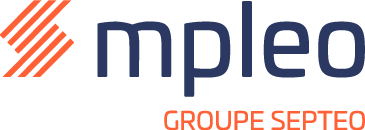
Building a skills framework: methodology, levers and common mistakes
In a context where organisations must constantly adapt, skills management has become a strategic imperative. Job roles are evolving, employee expectations are shifting, and technological advances are accelerating the need for a clear understanding of existing and emerging skills. A skills framework is a structuring tool for HR teams. But how can it be built effectively? What are the levers for making it a durable and truly useful tool? And what mistakes should be avoided to ensure it doesn’t become just another static document?
Why Structuring Skills Has Become an HR Priority
HR teams today face multiple challenges: supporting internal transformations, facilitating mobility, enhancing employability, and personalising development paths. All of these require a detailed understanding of available skills.
Having a clear and shared map of competencies not only allows for better management of internal resources but also enables quicker responses to operational needs. The skills framework becomes a vital foundation: it structures interviews, training plans, recruitment campaigns, and more broadly, HR development strategies. It also acts as a tool for recognising internal talent and supporting managerial decision-making.
What a skills framework can (and can’t) deliver
When designed rigorously, a skills framework becomes a lever for aligning organisational strategy, HR practices, and operational roles. It helps define clear expectations for each function, supports assessment processes, and identifies training or development needs.
It also highlights informal competencies (soft skills, experiential knowledge) which are often undervalued but crucial to team performance. In contexts where employees hold multiple roles or where organisations operate in agile environments, such recognition is a true driver of engagement.
However, a framework remains a tool. It cannot replace managerial judgement or qualitative conversations with employees. Its strength lies in how well it integrates with existing HR practices (interviews, development, mobility, training) and its ability to evolve over time.

Key Steps to Build a Useful and Evolving Skills Framework
Step 1: Define Objectives
The first step is to determine the purpose of the framework. Is it to support internal mobility? Strengthen the effectiveness of professional reviews? Formalise training pathways? Or guide organisational transformation?
Objectives must be shared and prioritised. Without clear direction, the framework risks becoming a catch-all document. It’s better to start with a defined and scalable scope—such as focusing initially on critical or high-pressure roles.
Step 2: Collaborate as a Team
Co-construction is essential to ensure the framework’s relevance and adoption. HR teams cannot work in isolation on this type of project. Managers, subject-matter experts, and even employees should be involved.
Facilitate workshops, interviews, or working groups. These sessions help gather real-world insights, identify critical know-how, and align perspectives. They also enhance the credibility of the final tool.
Step 3: Structure the Competencies
Once the skills are identified, the next step is structuring them:
- By type: knowledge, technical skills, interpersonal skills
- By proficiency level: basic, operational, expert, subject-matter expert
Each competency should be paired with specific evaluation criteria to support its use in interviews, talent reviews, or skills assessments. Use observable language such as “able to… in [specific context].”
Don’t forget to develop tools to use the framework effectively: evaluation grids, skills matrices, job profiles, or digital modules.

Step 4: Keep the Framework Dynamic
A skills framework is meant to evolve. Roles change, technologies advance, and employee expectations shift. To remain relevant, the framework must be reviewed regularly—every 12 to 24 months depending on the sector.
Plan these updates within your HR processes. Incorporate feedback from managers, users, and insights from interviews. This continuous governance will enhance the framework’s usefulness and embed it into your HR culture.
Common mistakes to avoid
Mistake 1: Moving too quickly
The urge to produce a framework quickly can lead to poor strategic choices: using a generic template, copying another framework without adaptation, or shortening the consultation phase. A tool disconnected from reality will have little impact. Quality should always take precedence over speed.
Mistake 2: Designing a static tool
A static framework quickly becomes outdated. It must evolve with the organisation, integrating new skills related to AI, sustainability transitions, or shifts in work practices. Managing regular updates is key to ensuring long-term value.
Mistake 3: Overestimating the power of the framework
The framework is not a magic solution. It cannot solve engagement, mobility, or training challenges on its own. Without managerial buy-in, HR support, and integration with existing tools, it will remain theoretical. It’s a starting point, not an end goal.
Conclusion: Treat the skills framework as a living tool
Building a skills framework is not a purely technical task. It is a collaborative process that requires dialogue between HR, managers, and operational teams.
It is also a dynamic tool that must adapt to internal transformations, organisational changes, and employee expectations. When viewed as a strategic HR lever, it helps structure decisions, provide clarity, and guide employee development effectively.
When well designed, implemented, and maintained, a skills framework becomes a lasting strategic asset, serving organisational performance, internal mobility, and agility

Looking to simplify the creation and management of your skills framework?
Discover how our HR software can help you structure, assess, and develop skills within your organisation.
